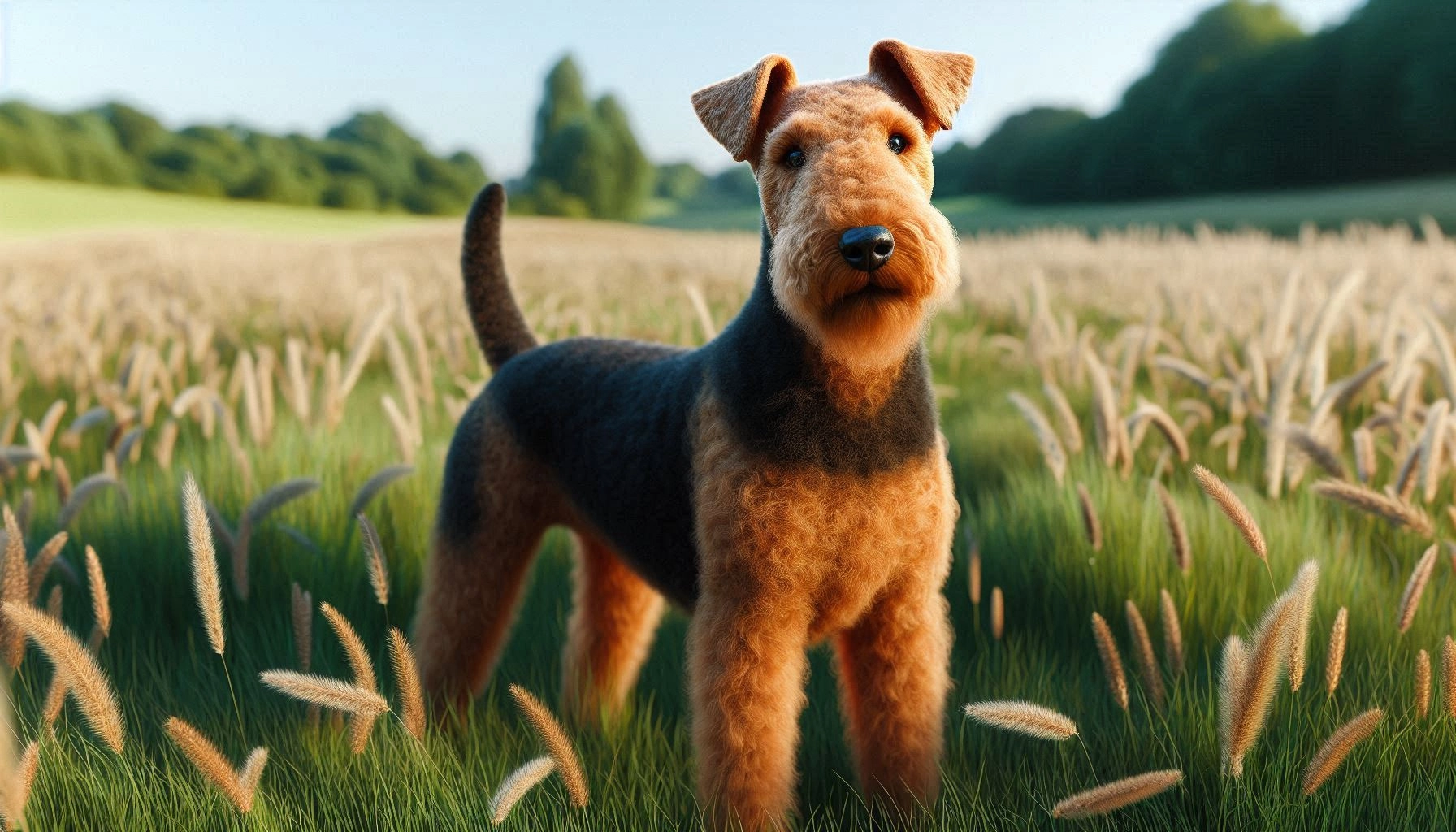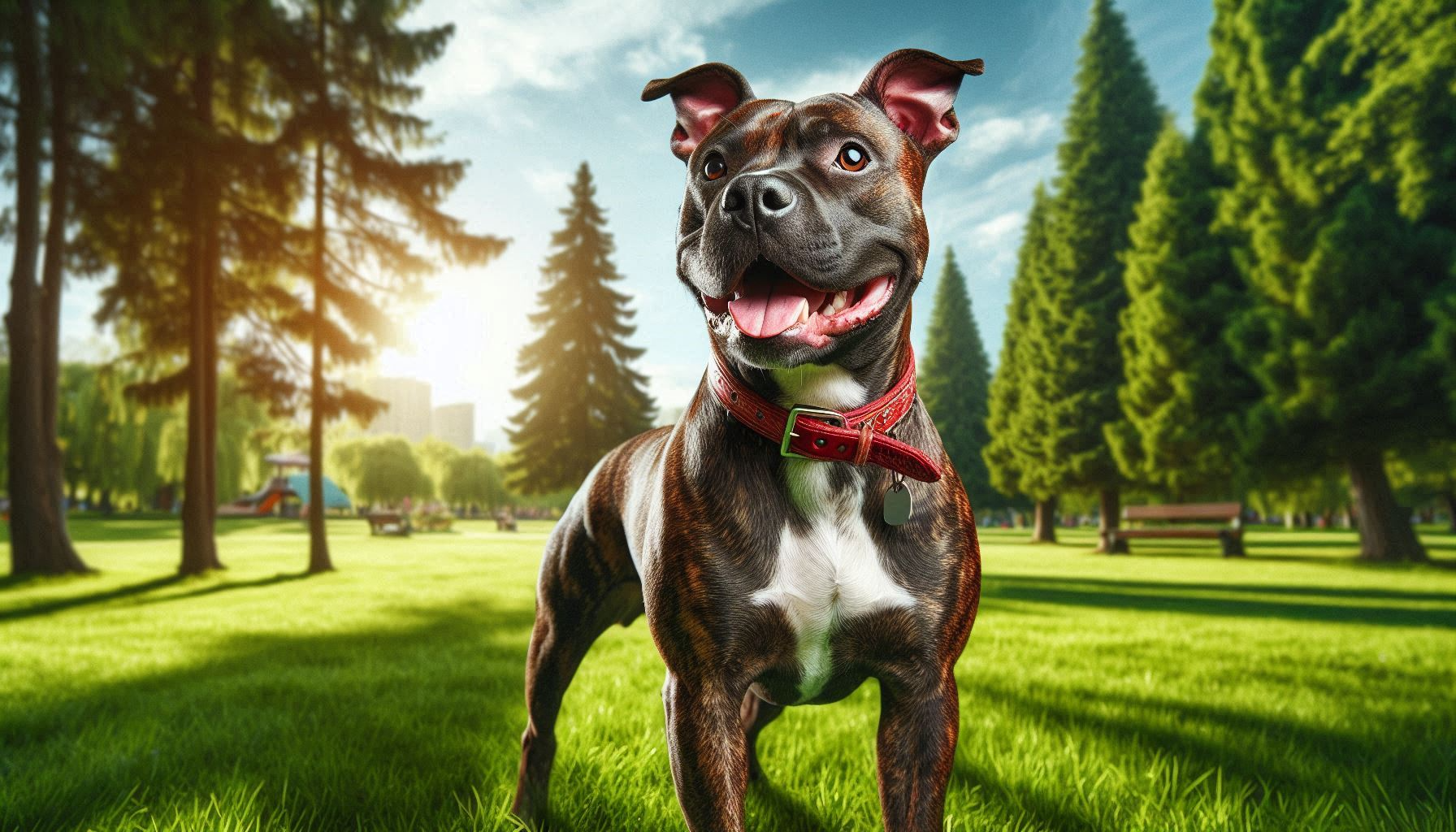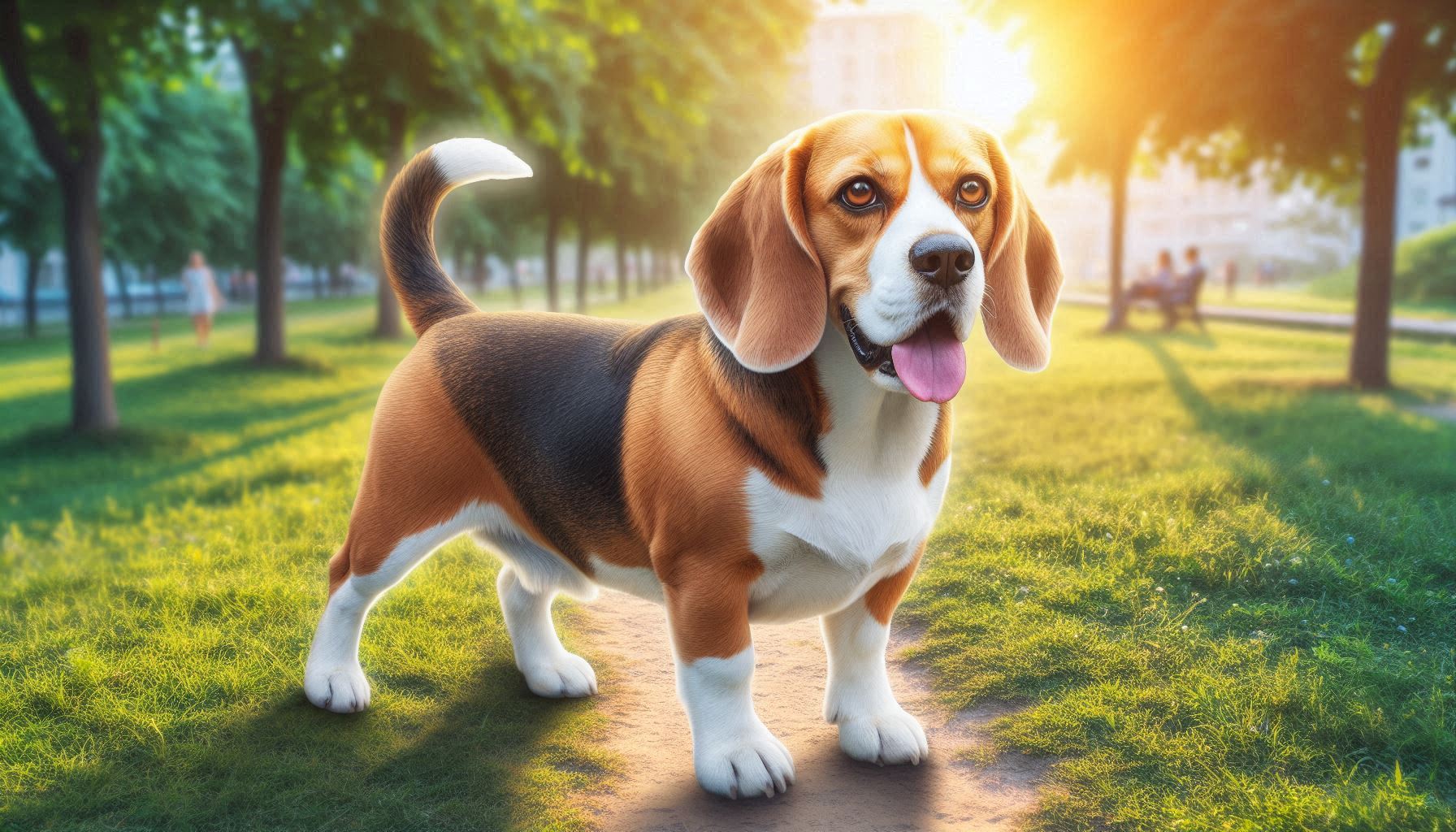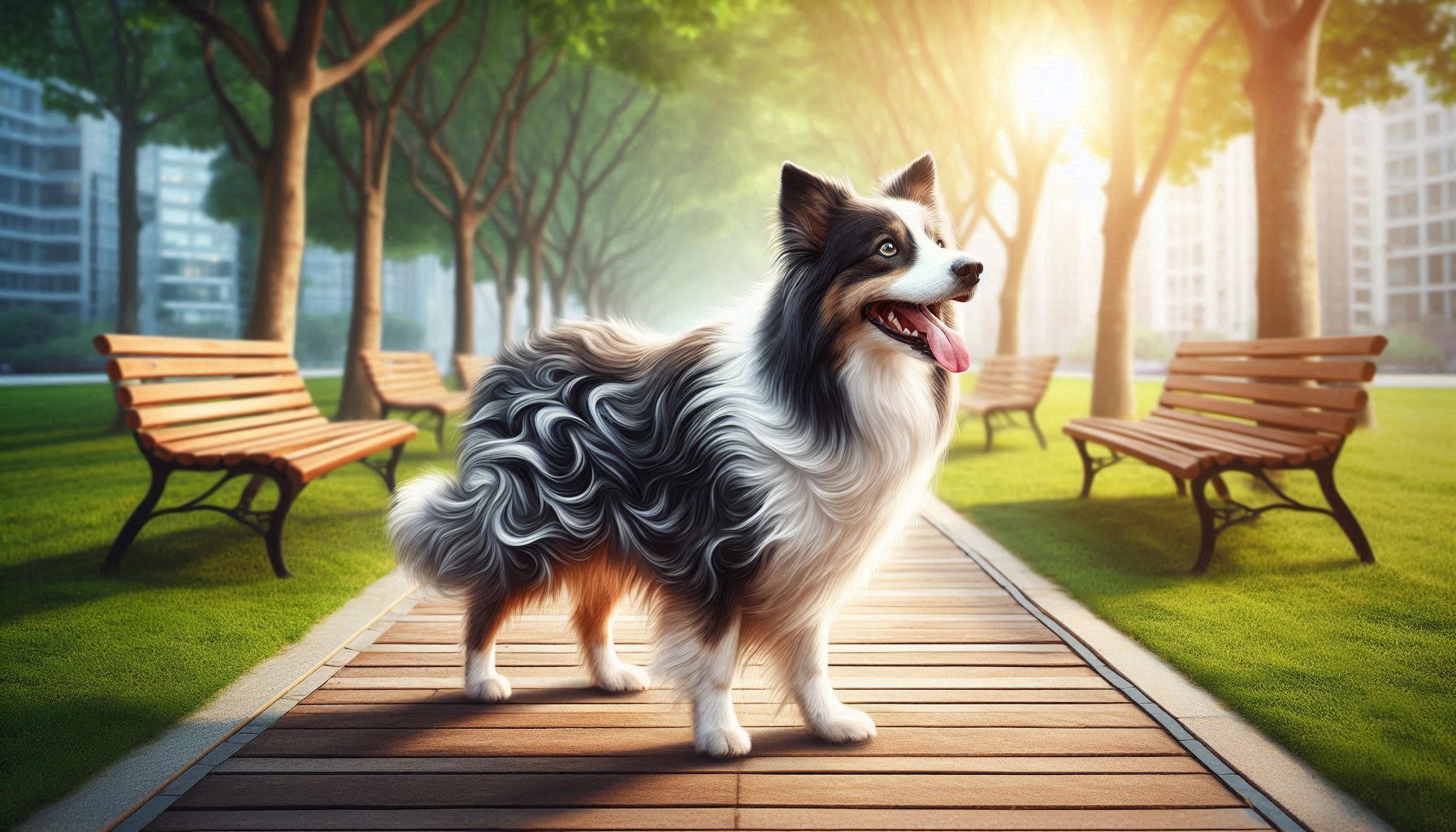Table of Contents
Dandie Dinmont Terrier Dog Breed
The Dandie Dinmont Terrier is a small but mighty dog breed, known for its distinctive appearance and endearing personality. With a rich history and a unique set of characteristics, this breed has captured the hearts of dog enthusiasts worldwide. The Dandie Dinmont Terrier is particularly popular among those who appreciate a dog that is both affectionate and independent. In this article, we’ll explore everything you need to know about this fascinating breed, from its history and physical traits to its temperament, care needs, and suitability as a family pet.
History and Origin
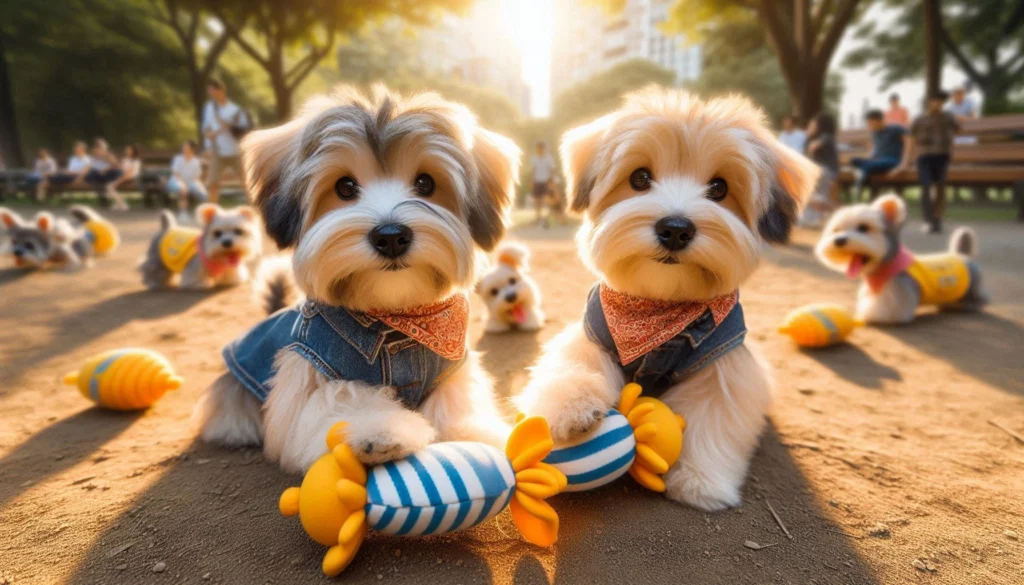
The Dandie Dinmont Terrier hails from the border region between England and Scotland, where it was initially bred in the 17th century. This breed was developed to hunt otters and badgers, and its tenacity and courage made it a favorite among farmers and hunters alike. The breed’s name has an interesting origin story it was named after a character in Sir Walter Scott’s novel “Guy Mannering,” published in 1814. The character, Dandie Dinmont, was a farmer who owned a group of terriers with the same physical characteristics as the modern breed.
This historical connection to literature, combined with the breed’s practical hunting abilities, has contributed to the Dandie Dinmont Terrier’s enduring legacy. While it is not as common today as it once was, the breed remains cherished by those who appreciate its unique qualities and historical significance.
Physical Characteristics
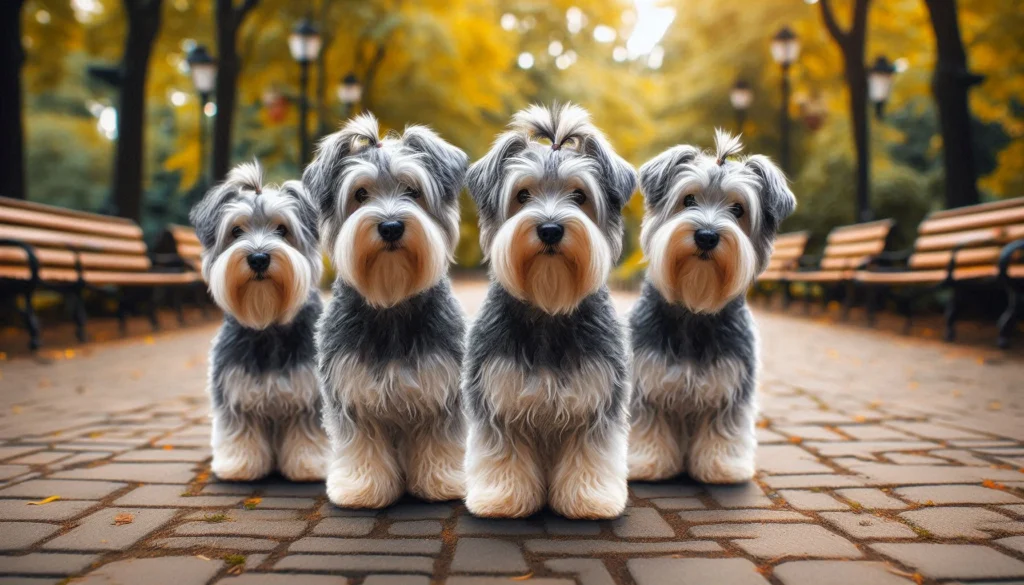
The Dandie Dinmont Terrier is a small breed, typically weighing between 18 and 24 pounds and standing about 8 to 11 inches tall at the shoulder. Despite its small size, this breed is robust and muscular, with a long body and short legs that give it a distinctive silhouette.
One of the most recognizable features of the Dandie Dinmont Terrier is its head, which is larger in proportion to its body. The head is crowned with a soft, silky topknot of hair, a characteristic that adds to its charm. The breed has a long, curved tail, which is often described as scimitar shaped.
The Dandie Dinmont Terrier’s coat is another notable feature. It has a unique double coat with a soft, downy undercoat and a harder, crisper outer coat. The coat can come in two color variations: “pepper” (a mix of dark bluish-black to light silvery gray) and “mustard” (ranging from reddish-brown to pale fawn). These colors, combined with the breed’s topknot, give the Dandie Dinmont Terrier a truly distinctive appearance.
Temperament and Personality
The Dandie Dinmont Terrier is known for its affectionate and loyal nature. Despite its hunting background, this breed makes a loving companion and is often described as being good natured and friendly. Dandies are typically very attached to their families and enjoy spending time with their human companions. They are also known for their independent streak, which can sometimes be mistaken for stubbornness.
When it comes to children, the Dandie Dinmont Terrier generally does well, especially if they are raised together. However, as with any breed, supervision is recommended when the dog interacts with very young children. Dandies tend to be tolerant and gentle but can become protective if they feel their family is threatened.
The Dandie Dinmont Terrier’s interaction with other animals can vary. While they can get along well with other dogs, particularly if they are introduced at a young age, their strong hunting instincts may make them prone to chasing smaller animals, such as cats or rodents. Proper socialization from an early age can help mitigate this behavior.
Health and Lifespan
The Dandie Dinmont Terrier is a generally healthy breed, but like all dogs, it is prone to certain health issues. Some of the common health concerns for this breed include:
- Intervertebral Disc Disease (IVDD): Due to their elongated bodies, Dandie Dinmont Terriers are at a higher risk for spinal problems, particularly IVDD. This condition can cause pain and mobility issues and may require medical or surgical intervention.
- Hip Dysplasia: Although less common in small breeds, hip dysplasia can occur in Dandie Dinmont Terriers. This condition involves the abnormal development of the hip joint, leading to arthritis or lameness.
- Glaucoma: This breed is also prone to eye issues, particularly glaucoma, which can lead to blindness if not treated promptly.
The average lifespan of a Dandie Dinmont Terrier is between 12 and 15 years. To ensure a long and healthy life for your Dandie, it’s important to provide regular veterinary care, a balanced diet, and appropriate exercise.
Care and Grooming
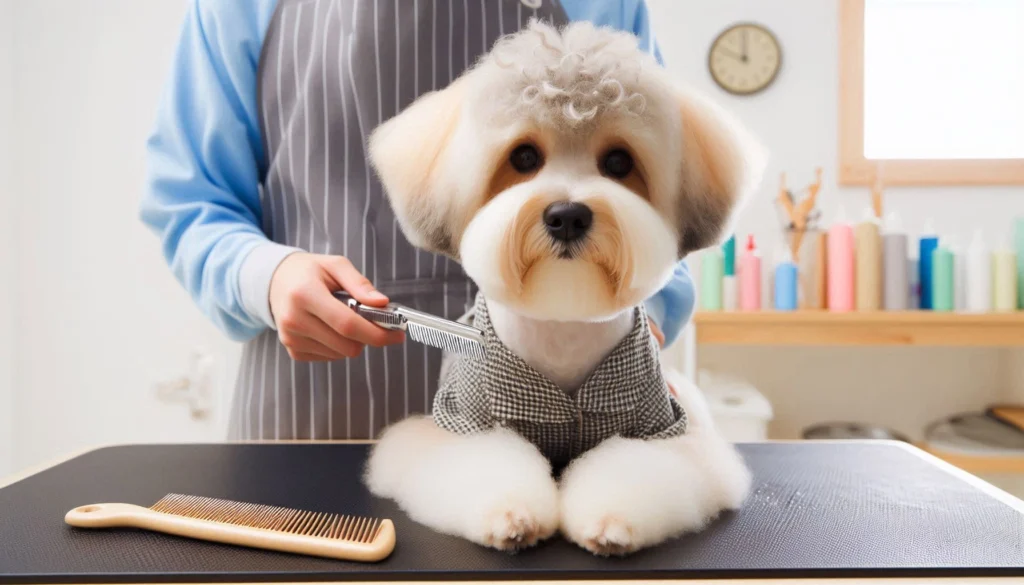
Caring for a Dandie Dinmont Terrier involves regular grooming, exercise, and attention to its dietary needs. Here’s a breakdown of what you can expect:
Grooming
The Dandie Dinmont Terrier’s coat requires regular grooming to keep it in top condition. This includes:
- Brushing: The breed’s coat should be brushed at least twice a week to prevent matting and tangles. Use a slicker brush or a comb specifically designed for double coats.
- Trimming: Regular trimming is necessary to maintain the breed’s characteristic appearance. The topknot, in particular, should be kept neat and tidy. Many owners choose to have their Dandie professionally groomed every 6 to 8 weeks.
- Bathing: Bathe your Dandie Dinmont Terrier as needed, typically every 4 to 6 weeks, depending on its activity level and how dirty it gets.
Exercise
While the Dandie Dinmont Terrier is not as high energy as some other terrier breeds, it still needs regular exercise to stay healthy and happy. Daily walks, playtime, and mental stimulation through games or training are essential. This breed enjoys outdoor activities, but it’s important to keep them on a leash or in a secure area due to their hunting instincts.
Dietary Recommendations
Feeding your Dandie Dinmont Terrier a balanced diet is crucial for its health. High quality commercial dog food that meets the breed’s nutritional needs is generally recommended. Be mindful of portion sizes, as this breed can be prone to obesity if overfed. Consult your veterinarian for specific dietary advice tailored to your dog’s age, weight, and activity level.
Training and Socialization
Training a Dandie Dinmont Terrier can be both rewarding and challenging. This breed is intelligent and eager to please, but its independent nature can sometimes lead to stubbornness. Early training and socialization are key to ensuring a well-behaved and well-adjusted dog.
Training Tips
- Positive Reinforcement: Use positive reinforcement techniques, such as treats, praise, and play, to motivate your Dandie during training sessions.
- Consistency: Be consistent in your training commands and routines. This breed responds well to a structured environment.
- Patience: Training should be approached with patience and understanding. Avoid harsh corrections, as they can cause the dog to become fearful or uncooperative.
Socialization
Socializing your Dandie Dinmont Terrier from a young age is crucial. Expose your dog to a variety of people, environments, and other animals to help it become well rounded and confident. Socialization can help curb any potential behavioral issues, such as excessive barking or wariness of strangers.
Suitability as a Family Pet

The Dandie Dinmont Terrier can make an excellent family pet, especially for families who appreciate the breed’s unique qualities. This dog is affectionate and enjoys being part of family activities. Its moderate energy level makes it suitable for both active and more relaxed households.
Living Environment
Dandie Dinmont Terriers are adaptable and can thrive in various living environments, from apartments to houses with yards. However, due to their size and exercise needs, they are best suited to homes where they can have daily walks and playtime.
Energy Levels
While they enjoy outdoor activities, Dandies are also content to spend time indoors, making them a good choice for families with varying levels of activity. They are not overly demanding in terms of exercise, but they do need regular physical and mental stimulation to prevent boredom.
Fun Facts and Trivia
- Literary Fame: The Dandie Dinmont Terrier is the only dog breed named after a fictional character, Dandie Dinmont from Sir Walter Scott’s novel “Guy Mannering.”
- Royal Approval: The breed was a favorite of Queen Victoria, who owned several Dandie Dinmont Terriers during her reign.
- Unique Silhouette: The Dandie Dinmont Terrier is one of the few terrier breeds with a distinctly curved body, often compared to that of a weasel or otter.
Similar to the Dandie Dinmont Terrier
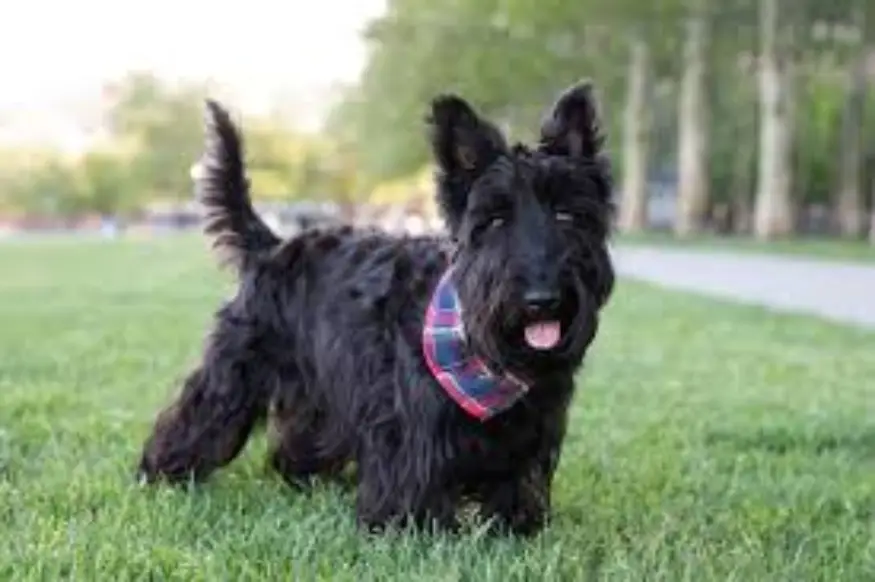
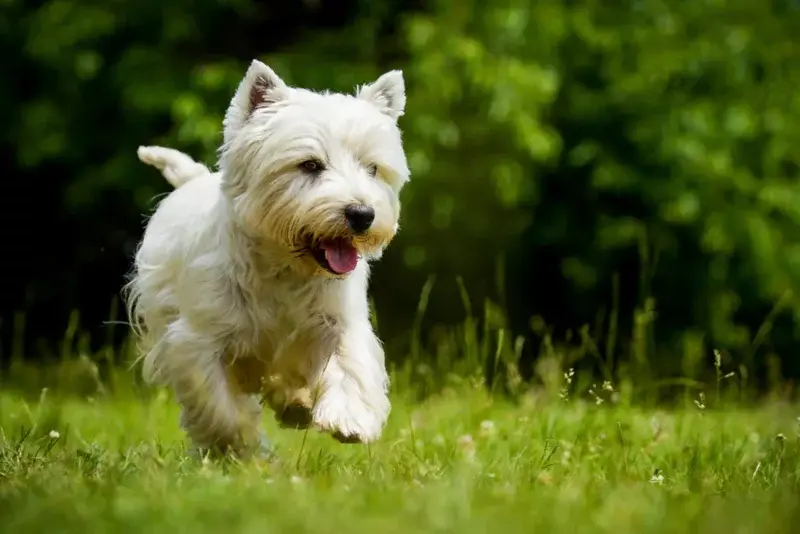
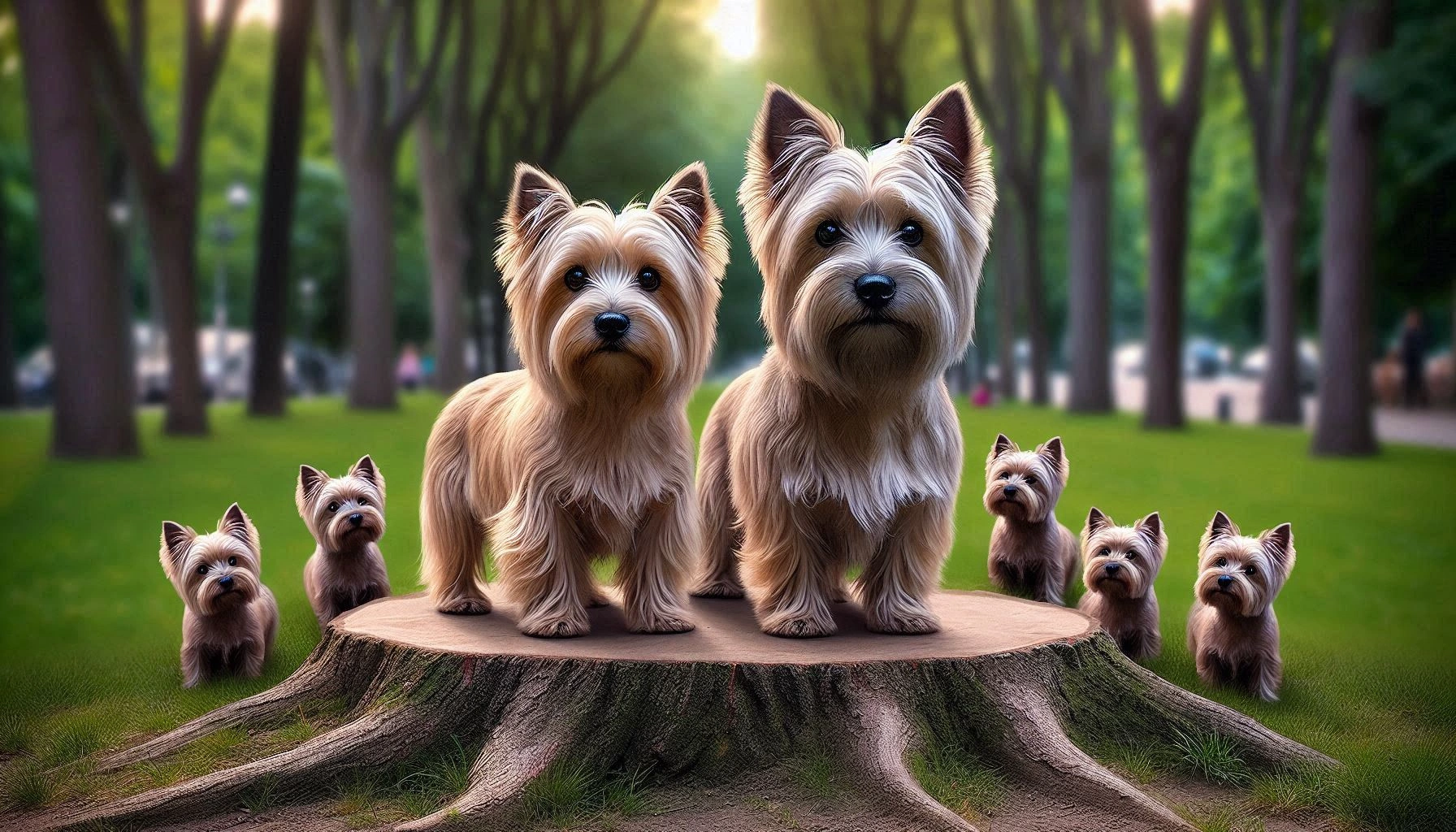
1. Scottish Terrier
The Scottish Terrier, also known as the “Scottie,” shares the Dandie Dinmont Terrier’s Scottish roots. This breed is known for its distinctive beard and wiry coat. Like the Dandie, the Scottie is independent, loyal, and makes a great companion for the right family.
2. West Highland White Terrier
Commonly known as the “Westie,” the West Highland White Terrier is another small terrier breed from Scotland. It has a similar lively and friendly temperament to the Dandie Dinmont Terrier, though it typically has a more outgoing personality.
3. Cairn Terrier
The Cairn Terrier is one of the oldest terrier breeds, originally bred in Scotland for hunting vermin. It is small, sturdy, and energetic, with a coat that requires regular grooming like the Dandie Dinmont Terrier. The Cairn Terrier is known for its fearless nature and strong willed personality.
Conclusion
The Dandie Dinmont Terrier is a breed rich in history, charm, and loyalty. With its distinctive appearance, gentle nature, and intelligence, it makes a wonderful companion for individuals or families seeking a devoted pet. While they may require special care due to their coat and back structure, the effort is well worth it for the love and companionship they provide. If you’re looking for a terrier that’s a bit out of the ordinary, the Dandie Dinmont may be the perfect fit.
FAQs)
Is the Dandie Dinmont Terrier a dangerous dog?
No, the Dandie Dinmont Terrier is not a dangerous dog. While they have a history as hunters, they are gentle, affectionate, and friendly toward their families. Proper socialization and training will ensure they are well-behaved.
Is the Dandie Dinmont Terrier a good guard dog?
The Dandie Dinmont Terrier is alert and protective but not aggressive, making them good watchdogs rather than guard dogs. They will bark to alert their owners of strangers but are too small and friendly to serve as true guard dogs.
